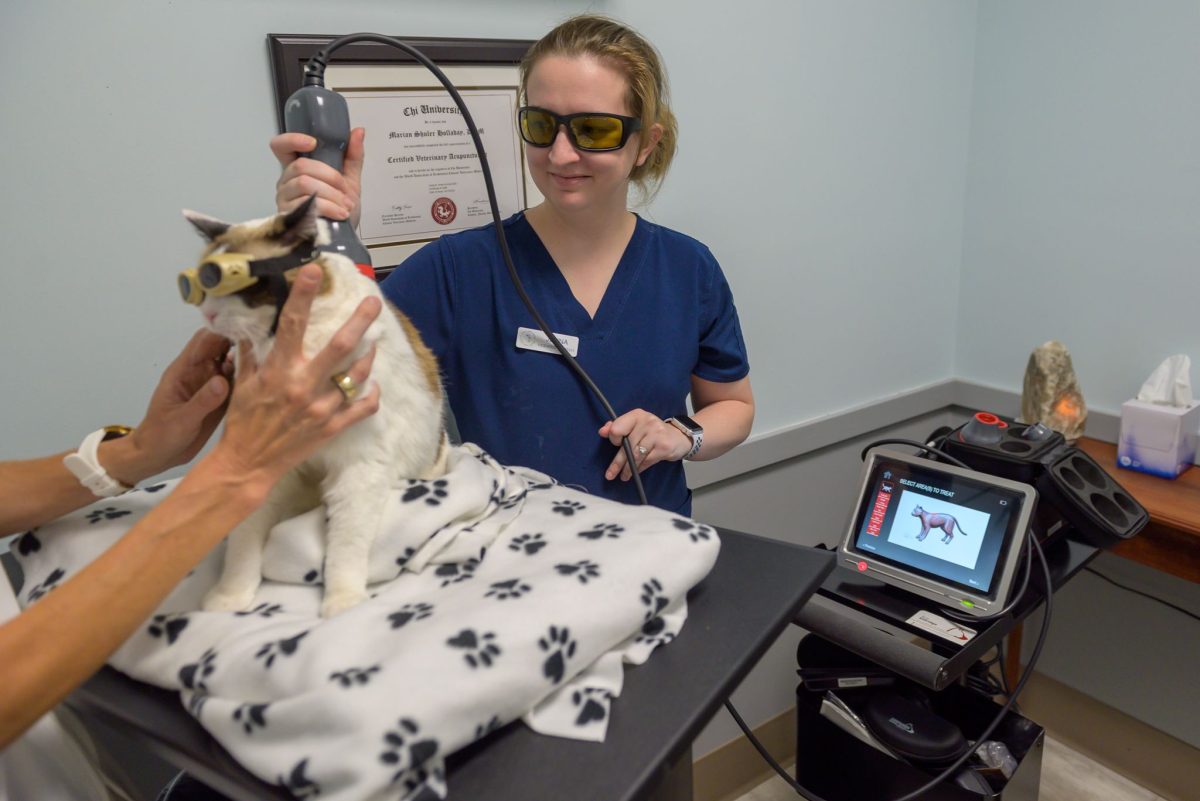Most middle-aged and older people are familiar with arthritis, a common, chronic condition that can affect nearly any joint. Dogs and cats can also develop arthritis, but cats hide their pain well and display only subtle changes, so are diagnosed less often. You may be surprised to learn how many cats have arthritis, and how early in life arthritis can begin. To help you recognize arthritis signs and treatment options, Mount Pleasant Animal Hospital is sharing cat arthritis facts.
#1: More cats are affected by arthritis than you think
Recent studies indicate that 60% of cats older than 6 years and 70% to 90% 12 years of age and older have appreciable arthritis signs on X-ray or physical exam. Arthritis develops over time, and the early stages are easy to miss. Most cats are either diagnosed by chance on an X-ray taken for another reason, or later in their disease process when signs become impossible to ignore.
#2: Cat arthritis signs can be subtle
Cats, evolutionarily, have not evolved much more than their wild cousins, and can hunt and survive on their own in the wild, despite their domesticated status, because they instinctively hide pain and illness, which indicates weakness in the wild. Therefore, most cats show no obvious arthritis signs when disease starts in middle age, and only as disease advances will you likely notice subtle differences, which you probably attribute to normal aging. But, the following signs can indicate advanced disease:
- Taking stairs one at a time, or differently than the past
- No longer using favorite high perches
- Difficulty grooming, with unkempt fur
- Accidents outside the litter box
- Decreased movement and activity
- Decreased play
- Increased irritability or hiding
Your veterinarian can detect early arthritis signs on a physical examination, before you likely notice changes at home. Signs may include grinding or crunching in the joints, reduced range of motion, or decreased muscle mass. Your cat’s annual wellness visits can facilitate earlier arthritis diagnosis and treatment.
#3: Cat arthritis is self-perpetuating
Arthritis begins when cartilage lining the joints begins to break down, which creates inflammation and further breaks down the joint tissues and perpetuates the inflammation. Eventually, bone rubs against bone, and spurs or loose chips can develop. Without intervention, the inflammatory cycle will continue, leading to decreased mobility and significant pain. Medications and other treatments can break this cycle and prevent further progression, but cannot reverse existing damage. Severe, end-stage arthritis may not respond to medical treatment, and occasionally requires a salvage procedure, such as a joint fusion or amputation.
#4: Traditional pain medications do not help cats, but new medications may
First-line arthritis treatments for dogs and people are non-steroidal anti-inflammatory medications, but cats cannot metabolize these drugs safely, and other pain medications, including gabapentin and sometimes opioids, can be used for pain control. Recently, a new drug was approved—a monoclonal antibody that targets a specific pain pathway substance, and reduces arthritis pain in 77% of treated cats. The therapy, which requires only a once-monthly, in-clinic injection, is ideal, because pet owners do not have to administer medications daily.
#5: Weight control is crucial for arthritic cats
Around half our pet population is obese or overweight, creating huge problems for their overall health. Excess weight puts physical stress on your pet’s joints, makes mobility more difficult, and can create more systemic inflammation that contributes to joint breakdown. Consult your veterinarian for nutrition and exercise recommendations, which should be customized to your cat based on their current health and mobility.
#6: Comfort and mobility can be improved with alternative therapies
Cat arthritis medications can help to control pain level, but they do little to stop the inflammation that causes arthritis progression. Weight control and controlled exercise are crucial steps, along with one or more of the following therapies:
- Supplements — Glucosamine and chondroitin are the main ingredients proven to spare further cartilage damage. An injectable medicine called Adequan works similarly.
- Photobiomodulation — Cold lasers use light energy to penetrate deep into tissues to improve circulation, decrease pain and inflammation, and improve mobility. Photobiomodulation is painless, drug-free, has no side effects, and can provide life-changing benefits.
- Acupuncture — Acupuncture stimulates specific points that modify the pet’s nervous system, alleviating pain and producing an overall sense of wellbeing.
- Rehabilitation — Physical rehabilitation modalities for cats can improve muscle mass and mobility.
- Complementary medicine — Homeopathic and herbal medicines can be prescribed by qualified holistic practitioners.
If you are lucky enough to be owned by a cat, you no doubt want to ensure they have the highest possible quality of life and care. Identifying early arthritis signs and consistent treatment can help your cat stay agile and mobile well into their senior years. Contact the Mount Pleasant Animal Hospital team to schedule a wellness examination, or if you believe your cat is showing arthritis signs.
To check out our other family-owned and operated area veterinary hospitals, and to learn about our services, visit Animal Hospitals of the Lowcountry, Mount Pleasant Veterinary Hospital








